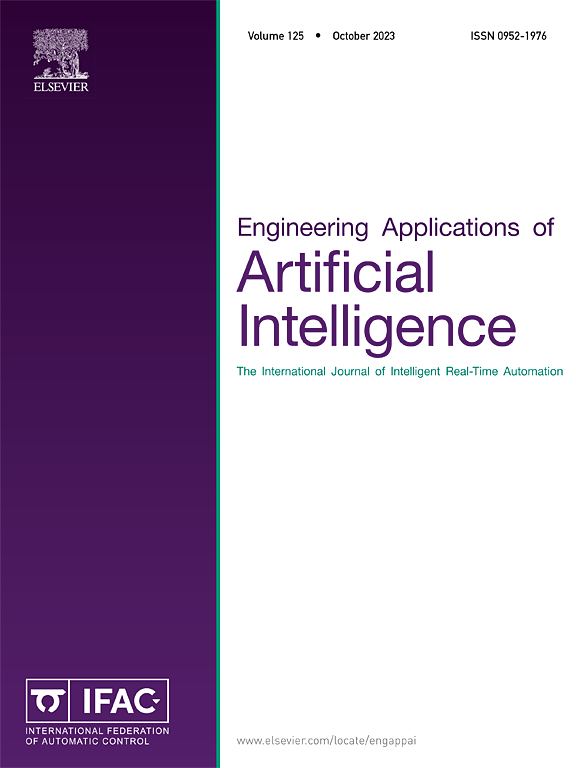Paying more attention to local contrast: Improving infrared small target detection performance via prior knowledge
IF 7.5
2区 计算机科学
Q1 AUTOMATION & CONTROL SYSTEMS
Engineering Applications of Artificial Intelligence
Pub Date : 2025-02-20
DOI:10.1016/j.engappai.2025.110244
引用次数: 0
Abstract
The data-driven methods for InfraRed Small Target Detection (IRSTD) have achieved promising results. However, these methods typically incorporate modules with high computational complexity, which enhance performance at the expense of computational efficiency. Utilizing human expert knowledge to assist data-driven methods in better learning with less costs is worthy of exploration. To effectively guide the model to focus on targets’ spatial features, this paper proposes the Local Contrast Attention Enhanced infrared small target detection Network (LCAE-Net), combining prior knowledge with data-driven deep learning methods. LCAE-Net is a U-shaped neural network model which consists of two developed modules: a Local Contrast Enhancement (LCE) module and a Channel Attention Enhancement (CAE) module. The LCE module takes advantage of prior knowledge, leveraging handcrafted convolution operators to acquire Local Contrast Attention (LCA), which could realize background suppression while enhancing the potential target region, thus guiding the neural network to pay more attention to potential infrared small targets’ location information. To effectively utilize the response information throughout the downsampling progresses, the CAE module is proposed to achieve the information fusion among feature maps’ different channels. Experimental results indicate that our LCAE-Net outperforms comparison methods on the three public datasets, and its detection speed could reach up to 70 Frames Per Second (FPS). Meanwhile, our model has a parameter count and Floating-Point Operations (FLOPs) of 1.945 Million (M) and 4.862 Giga (G) respectively, which is suitable for deployment on edge devices. Our code will be available at https://github.com/boa2004plaust/LCAENet.

求助全文
约1分钟内获得全文
求助全文
来源期刊

Engineering Applications of Artificial Intelligence
工程技术-工程:电子与电气
CiteScore
9.60
自引率
10.00%
发文量
505
审稿时长
68 days
期刊介绍:
Artificial Intelligence (AI) is pivotal in driving the fourth industrial revolution, witnessing remarkable advancements across various machine learning methodologies. AI techniques have become indispensable tools for practicing engineers, enabling them to tackle previously insurmountable challenges. Engineering Applications of Artificial Intelligence serves as a global platform for the swift dissemination of research elucidating the practical application of AI methods across all engineering disciplines. Submitted papers are expected to present novel aspects of AI utilized in real-world engineering applications, validated using publicly available datasets to ensure the replicability of research outcomes. Join us in exploring the transformative potential of AI in engineering.
 求助内容:
求助内容: 应助结果提醒方式:
应助结果提醒方式:


